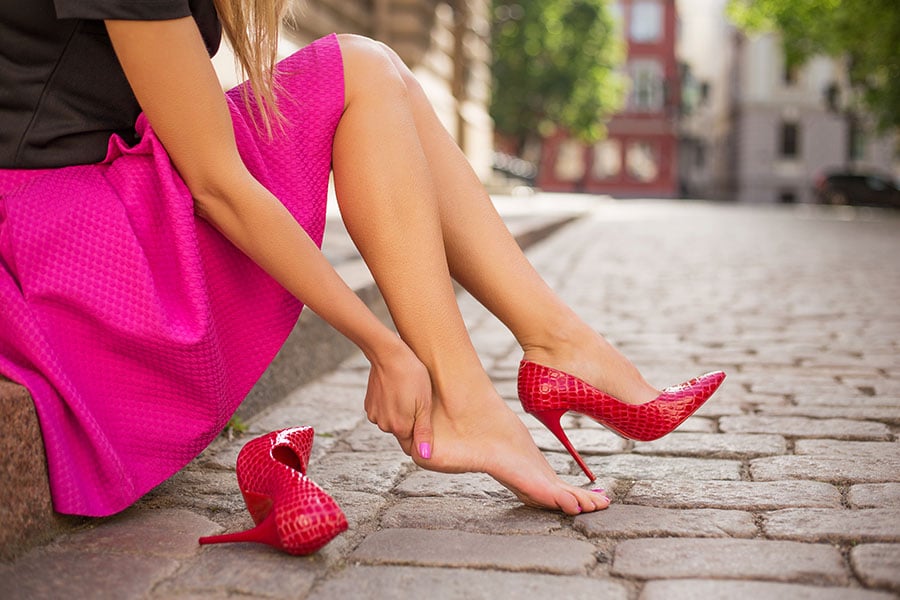Heel Pain? It might not be the Plantar Fascia!
Heel pain is a common foot complaint and it affects people of all ages and genders. There are many possible causes of getting heel pain and the most common one is plantar fasciopathy.
However there is this one cause that is not typically considered and yet is still quite common: ‘Heel fat pad sprain’ also known as ‘Calcaneal fat pad syndrome’
It occurs from a variety of factors and these can include: repetitive impact or trauma to the heel, excessive acute forces such as jumping or wearing inappropriate footwear for longer periods of time. These can all lead to excessive strain at the heel pad.
The pain occurs in the middle of the heel at the base of the foot. It is usually described as a deep and dull aching that feels like an intense bruise. Walking barefoot on hard surfaces makes the pain worse.
Medical conditions that contribute to the development of heel fat pad syndrome include Rheumatoid Arthritis, Systemic Lupus Erythematosus (SLE) and Foot Deformities.
Symptoms
Common symptoms of heel fat pad sprain may include:
- Pain and tenderness beneath the heel, particularly with weight-bearing activities or pressure on the heel pad.
- Swelling and inflammation in the affected area.
- Difficulty bearing weight on the affected foot.
- Discomfort or pain when walking or standing for prolonged periods.
Treatments
Treatment for heel fat pad sprain aims to alleviate pain, reduce inflammation, and promote healing of the affected tissue. Treatment options may include:
- Resting and avoiding activities that exacerbate symptoms.
- Applying ice packs to the affected area to reduce pain and inflammation.
- Wearing supportive shoes with adequate cushioning and shock absorption.
- Using heel cups or pads to provide additional cushioning and support to the heel pad.
- Taking over-the-counter pain relievers or anti-inflammatory medications.
- Physical therapy exercises to improve flexibility and strength in the foot and ankle.
- In severe or persistent cases, corticosteroid injections or surgical intervention may be considered.
Wearing poorly fitted footwear such as too narrow, too slippy, unsupportive, too flat or too high can alter the biomechanics of walking and place increased pressure on the heels and forefeet.
Next week? As in the music written by Noel Gay & Ralph Butler in 1932 ‘The Sun has got his hat on and is coming out today’ – Polite reminder that the clocks go back next Sunday ready for Summer time!
Are you suffering from any foot condition? At The Chelsea Clinic, we can help. One of our podiatrist can assist and then recommend what treatments are best to get you back on track. Podiatrist South Kensington
Schedule an appointment here or you may call us at +44 (0) 207 101 4000.
We hope you have a feetastic day!
-The Chelsea Clinic and Team




